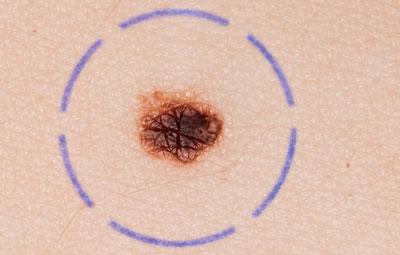Highlights in Melanoma Research and Treatment

In the last years there has been great progress in the treatment of advanced melanoma patients. Data have been published about the possibility of achieving a long term survival with the use of single anti-PD-1 antibodies, as well as data on the description of clinical subgroups of patients that can also obtain a long term survival with the use of targeted drugs combining the oral BRAF and MEK inhibitors. The first immunotherapy combination including nivolumab, an anti-PD-1 antibody, plus ipilimumab, an anti-CTLA-4 antibody, has been approved, based on its demonstrated benefit in terms of overall survival versus ipilimumab alone.1
Benefit with adjuvant Nivolumab in Resected Melanoma
Patients with melanoma who have successfully undergone resection but who are at high risk for relapse have substantially better outcomes with nivolumab than the current standard-of-care ipilimumab. The new results come from the phase 3 CheckMate 238, which was stopped early owing to benefit. Adjuvant nivolumab increased relapse-free survival by a significant 35% compared to adjuvant ipilimumab while also reducing the rate of grade ≥3 adverse effects by approximately a third.2
The study was presented during a symposium at the European Society for Medical Oncology (ESMO) 2017 Congress and was published in the New England Journal of Medicine.
Neoadjuvant Dabrafenib and Trametinib
The findings from a Phase II neoadjuvant trial of targeted therapy in Stage III patients were also presented this year at ESMO. The trial tested a combination of dabrafenib and trametinib given before and after surgery in patients with resectable Stage IIIB/C BRAF V600-mutant melanoma.
The study found that nearly half of all patients achieved a complete pathologic response by the time they underwent surgery, and that every patient had some degree of tumour shrinkage while on therapy. In almost half of the cases, surgery was considered easier as well. The study found out that neoadjuvant dabrafenib and trametinib has a high response rate in patients.3
Pembrolizumab and Epacadostat in combination
Other research presented at ESMO includes the findings from the Phase I/II study of combination pembrolizumab and the investigational IDO1 inhibitor, epacadostat, in advanced melanoma patients.
The results from the ECHO-202/KEYNOTE-037 trial demonstrated that the combination had a response rate in 55% of patients and disease control was seen in more than 70% of patients. The progression-free survival at 18 months for treatment-naive patients was over 50%.
This combination of treatment was very tolerable and without any significant toxicities. Combination therapy often compounds side effects, but this study revealed that this combination creates toxicity comparable to single-agent pembrolizumab.4
BRIM8: Benefit with Adjuvant Vemurafenib in Resected BRAFV600 positive Melanoma
Adjuvant vemurafenib provided substantial benefit to patients with completely resected stage IIC-IIIB BRAFV600 positive melanoma at high recurrence risk, where fewer disease-free survival (DFS) events and distant metastasis-free survival (DMFS) events were observed with vemurafenib compared to placebo.
BRIM8 was a randomised, double-blind, placebo-controlled, 2-cohort study that placed 498 adult patients with fully resected stage IIC, IIIA, or IIIB melanoma into cohort 1 and patients with stage IIIC melanoma to cohort 2. Both cohorts were randomly assigned to vemurafenib at 960 mg twice daily or placebo for 52 weeks. In cohort 1, patients were also stratified by geographic region and disease stage.
The primary endpoint of BRIM8 was DFS. Secondary objectives included safety, DMFS, and overall survival (OS). A hierarchical analysis of cohort 2 data prior to cohort 1 was prespecified.
Although the study did not meet the primary DFS endpoint in patients with stage IIIC disease, adjuvant vemurafenib appeared to be well tolerated and effective in patients with resected stage IIC–IIIB BRAFV600 positive melanoma. Overall, the safety profile of adjuvant vemurafenib was consistent with previous data and no new safety signals were observed.5
References:
- Soria A. et al., Highlights of the season 2016-2017 by the Spanish Melanoma Group (GEM).
- Weber J et al., Adjuvant Nivolumab Versus Ipilimumab in Resected Stage III or IV Melanoma. New England Journal of Medicine.
- Long G. V. et al., Adjuvant Darafenib plus Trametinib in Stage III BRAF- Mutated Melanoma. New England Journal of Medicine.
- Hamid O et al., Epacadostat plus pembrolizumab in patients with advanced melanoma: Phase 1 and 2 efficacy and safety results from ECHO-202/ KEYNOTE-037. n: Proceedings from the 2017 ESMO Congress; September 8-12, 2017; Madrid, Spain. Abstract 1214O.
- Lewis K et al, BRIM8: a randomized, double-blind, placebo-controlled study of adjuvant vemurafenib in patients (pts) with completely resected, BRAFV600+ melanoma at high risk for recurrence.